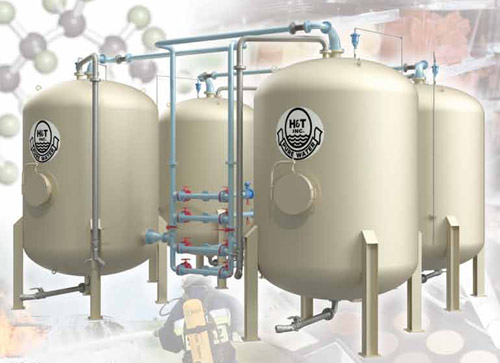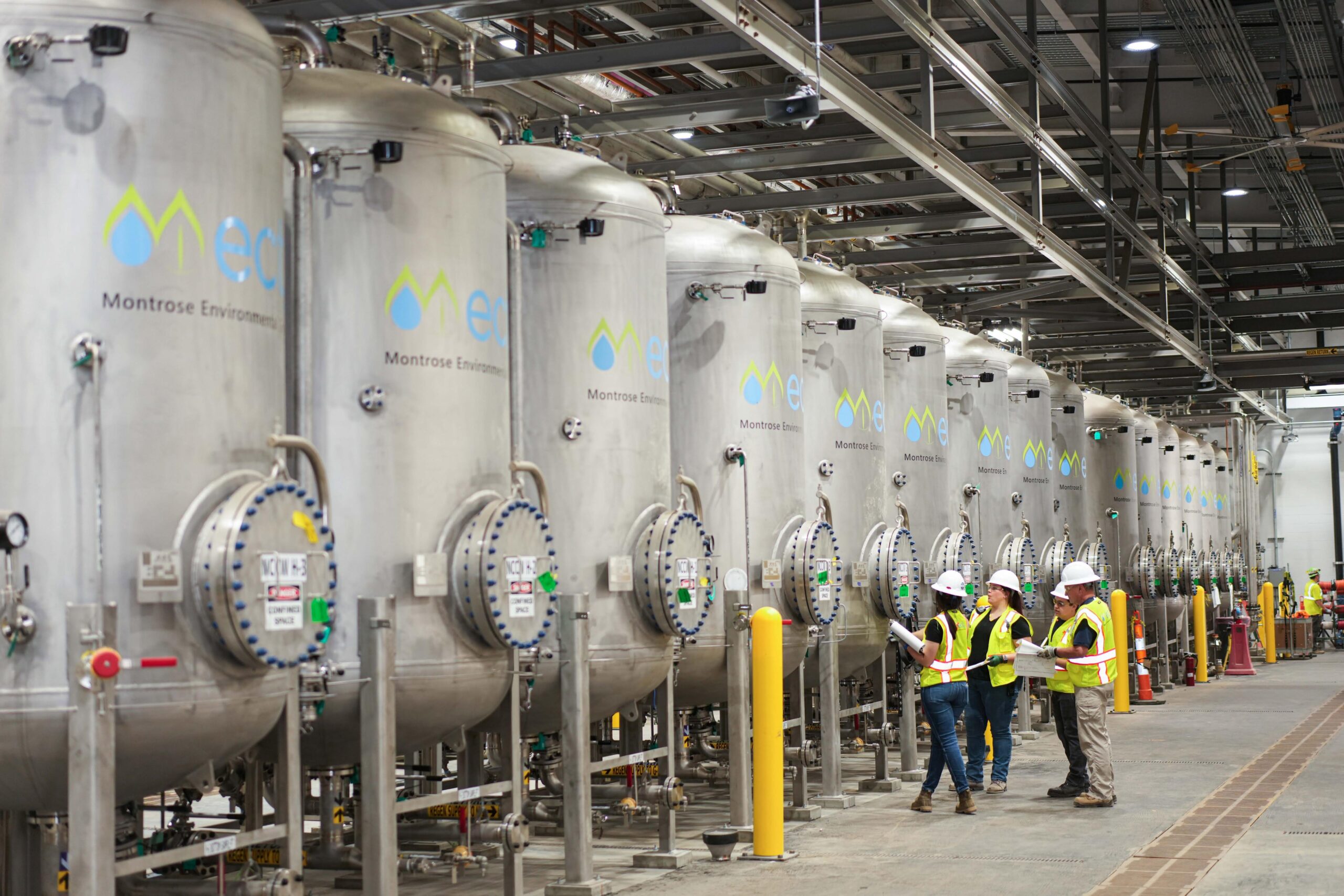Your Guide to PFAS Treatment Technologies and Perks
The occurrence of PFAS contamination in water sources demands a detailed understanding of readily available treatment innovations. Various approaches, such as triggered carbon filtration, ion exchange systems, and progressed oxidation procedures, present distinctive advantages in attending to these relentless contaminants. Each technology not just targets certain PFAS compounds but likewise plays an essential function in improving total water high quality and shielding ecological integrity. As areas come to grips with the ramifications of PFAS exposure, the selection of an ideal therapy approach ends up being progressively crucial, triggering a closer examination of these technologies and their respective benefits.
Recognizing PFAS Contamination
Understanding PFAS contamination is critical for resolving its pervasive influence on ecological and human health and wellness (m270 pfas treatment). Per- and polyfluoroalkyl materials (PFAS) are a team of synthetic chemicals widely utilized in different industrial and customer items because of their water- and grease-resistant buildings. Frequently discovered in firefighting foams, non-stick kitchenware, and water-repellent materials, PFAS have actually gone into the setting via manufacturing procedures, wastewater discharges, and seeping from land fills
As soon as launched, these compounds continue in the setting, causing prevalent contamination of dirt and water resources. Their unique chemical structure, defined by strong carbon-fluorine bonds, makes them immune to deterioration, causing a sensation referred to as "for life chemicals." Subsequently, PFAS can accumulate in the human body and the food chain, possibly creating adverse health results, including immune system disruption, developmental problems, and a boosted danger of certain cancers cells.
Regulative firms and wellness organizations are progressively identifying the relevance of PFAS contamination, triggering efforts to check, analyze, and mitigate its results. Comprehending the paths of PFAS contamination is necessary for notifying public law and creating efficient methods to protect both ecological and human wellness.
Summary of Treatment Technologies
Numerous treatment innovations have been created to resolve the obstacles posed by PFAS contamination in water and soil. These innovations can be broadly classified into a number of groups, each with its special devices and efficiency in removing PFAS compounds.
One popular approach is ion exchange, which uses resin products to capture and get rid of PFAS from infected water. This technique is especially reliable for short-chain PFAS and can accomplish significant reductions in concentration levels. An additional innovation, advanced oxidation procedures (AOPs), employs solid oxidants and ultraviolet light to damage down PFAS into less harmful substances. AOPs appropriate for treating a broad range of PFAS compounds yet might need careful optimization to make the most of efficiency.

Activated Carbon Filtration
Triggered carbon filtration is an extensively used technique for the elimination of PFAS from infected water, known for its capability to adsorb a wide variety of organic substances. This technology utilizes triggered carbon, a very porous material with a considerable area, which assists in the binding of PFAS particles through physical adsorption. The efficiency of turned on carbon in getting rid of PFAS is affected by a number of factors, consisting of the kind of carbon utilized, the contact time, and the concentration of PFAS Get the facts in the water.
One of the benefits of turned on carbon purification is its flexibility; it can be applied in various configurations, such as granular triggered carbon (GAC) systems or powdered triggered carbon (POLITICAL ACTION COMMITTEE) systems. GAC systems are usually utilized in larger-scale applications, while PAC can be made use of in smaller sized or momentary configurations. Moreover, the innovation is reasonably very easy to operate and maintain, making it accessible for many water therapy centers.

Ion Exchange Equipment
Ion exchange systems stand for another efficient approach for the elimination of PFAS from polluted water, this content complementing techniques like triggered carbon filtering. These systems operate the concept of trading ions in the water with ions held on a resin material. Ion exchange materials can be especially developed to target the adversely billed PFAS compounds, effectively recording them and permitting cleaner water to travel through.
Among the primary advantages of ion exchange systems is their capability to get rid of a vast array of PFAS, consisting of both long-chain and short-chain versions. This versatility makes them appropriate for numerous applications, ranging from metropolitan water therapy to industrial procedures. Furthermore, ion exchange systems can usually attain lower discovery limits for PFAS contrasted to a few other therapy techniques, thus improving water top quality.
Nonetheless, it is necessary to monitor and manage the regeneration of ion straight from the source exchange media, as the performance can decrease gradually due to saturation. Correct upkeep and replacement of the resin are critical for maintaining the system's efficiency. On the whole, ion exchange systems supply a trustworthy and effective solution for PFAS elimination, adding substantially to secure alcohol consumption water criteria and environmental security.
Advanced Oxidation Processes
Advanced Oxidation Processes (AOPs) use powerful oxidants to successfully weaken PFAS substances in contaminated water. These ingenious treatment methods produce very responsive types, such as hydroxyl radicals, that can break down intricate PFAS particles right into much less damaging by-products. m270 pfas treatment. AOPs normally utilize mixes of ultraviolet (UV) light, ozone, hydrogen peroxide, or Fenton's reagent, improving the oxidation possibility and boosting deterioration efficiency
The main advantage of AOPs exists in their capability to target a broad variety of PFAS substances, including both long-chain and short-chain versions. This convenience is crucial, as PFAS contamination commonly involves blends of different compounds with differing chemical structures. Moreover, AOPs can be incorporated into existing water treatment systems, making them a practical service for several communities and industries.
Nonetheless, the implementation of AOPs can be resource-intensive, needing cautious factor to consider of functional expenses and energy consumption. In addition, while AOPs are efficient in damaging down PFAS, they might not totally eliminate all byproducts, demanding more treatment actions - m270 pfas treatment. Generally, AOPs represent a promising method for resolving PFAS contamination, adding to cleaner water resources and boosted public health security

Final Thought
By picking the proper modern technology, communities can enhance water top quality, safeguard public health, and mitigate the environmental threats linked with PFAS direct exposure. Continued research and execution of these approaches are necessary for effective monitoring of PFAS contamination in impacted locations.